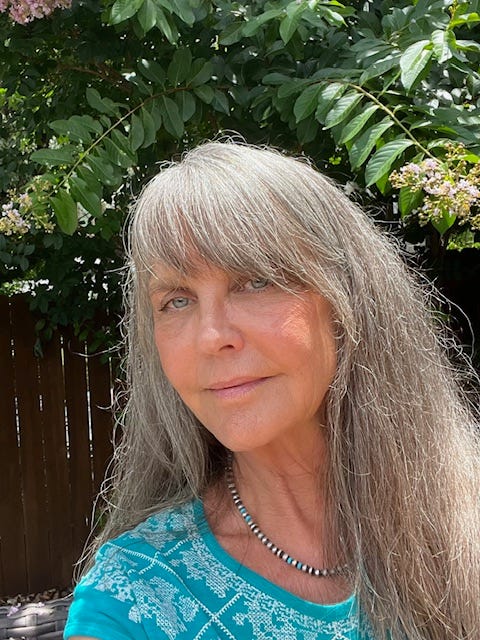Adventures In Story Structure, Part Five, Connecting the Dots
By Stephanie Raffelock
Good news! The SCN 2024 Anthology Real Women Write: The Power of Friendship is available now. In the foreward, author Len Leatherwood says, “The essays, memoir pieces, poems, and fictional stories in this anthology reveal the multilayered aspects of friendship. The joy, pain, ambivalence, and love that friendship brings, whether in the past, the present, or the hoped-for future. Within these pages, you will recognize your own experiences, empathize with those who chronicle painful outcomes, and laugh with those who describe the lighter, more joyful moments of friendship.” Go here to order your copy.
Welcome to StoryCraft: Writers Write About Writing (formerly the SCN blog Telling HerStories), all about the craft of writing by published authors and teachers. Other sections in Her Stories include:
True Words from Real Women (formerly One Woman’s Day) section featuring stories about ordinary and extraordinary days in the lives of Story Circle members.
Reviews & Interviews pointing you to your next great read or favorite author.
And our informative monthly Flash newsletter.
We’re delighted to be here and look forward to your comments and submissions. Members, submit your posts here. You must be logged in to access the form. Let’s write!
This post is the fifth in a series on “Adventures in Story Structure” by SCN author Stephanie Raffelock. Please check back to read the series for the whole picture. Thank you, Stephanie!
This is narrative: The king died, and then the queen died.
This is plot: The king died – and then the queen died of grief.
~E.M. Forester
What changed in the above quote that made the second line plot? It’s theme. Theme is the connective tissue of story. It’s what the story is about. Themes are the constantly humming undercurrent of story. And if you know the story you want to tell, and you set it up with the scaffolding of structure, it will support theme, and you’re a mile ahead of the game.
In this series, markers were suggested for basic scaffolding:
The Set Up; The Inciting Incident, The First Plot Point, The Mid-Point, The All Is Lost Moment, The Denouement, and The Transformation. What connects the dots is a theme. You’re telling a grief story, a love story, a suspense story, etcetera, and your job is to remain true to theme.
In Paula Munier’s excellent book, Plot Perfect, she writes,
· “theme driven plots are the ones that resonate most with readers, because they strike close to home.”
· “Theme is what your story is really about.”
· “Themes speak to the universal; they address the human condition.”
In 2013, I wrote my first novel, and as I believe I confessed in an earlier post, the result of that effort was that I had fifty-five thousand words of rambling narrative with neither a story nor a theme in sight. I learned that I could sit down and crank out 2,000 words a day, but I didn’t plan and I didn’t prep, I made up the story as I went along. In the end, no one cared that the king died and then the queen died, to return to the original example.
Writers often push back against plotting and prepping a novel before you begin writing it. They have a muse. They trust their gut. Their characters will tell the author what to write. Maybe that’s so for some. I can’t comment on that choice, I just know that it does not work for me. And I learned that lesson the hard way.
The second and third novels that I wrote, were not much better than the first, but by novel number four, I was starting to study structure and I worked with a coach who laid it all out for me. IF I was going to be a novelist, IF I was going to be a serious writer, I had to learn what readers expect and want. As obvious as that sounds, I hadn’t considered my reader until the fourth novel. My fourth novel was a story that hung together beginning, middle, and end. It garnered me my first literary agent. Although she was unable to sell the novel, I was bolstered by the fact that my work was professional enough for a big-time New York literary agent who took notice.
One of the best things I’ve learned about writing fiction and non-fiction is that readers want to be moved; meaning they want an emotional experience, a reaction to the story. They want to feel something and be connected to something; they want to love or hate the characters. They want to hang on to a memorable ending.
Readers are smart. They intuit very quickly whether or not the story is going anywhere. To that end, as an author, I feel an obligation to prep, plot, and create a scene list before I ever start writing. Prep work can take me anywhere from three to six months. Some writers love working with Scrivner, a software for book writing, that I hear produces some good and satisfying results. I tend to be old-school, so I create a story bible in a three-ring binder with divider tabs. I write about the place, character sketches, and a beat sheet (scenes) using the markers discussed in this series. And only then do I begin to write a novel.
Writing a novel is difficult and committed work, made somewhat easier if you have a map of where you’re going. The purpose of structure is that it’s a tool for creating a compelling tale. In addition to the basic markers, you need to connect the dots and that’s the bulk of your prep work.
Here’s what Paula Munier says about the results of doing good prep work:
You have a main plot and several subplots, as well as a main theme and several variations on theme. You have a well-rounded protagonist, a worthy antagonist, and a colorful cast of secondary characters who mirror your themes and variations on theme.
And now you have an organizing principle, as well as a scene-by-scene breakdown of your story. All you have to do is write it – and then polish it.
The information contained in this series is rudimentary at best, but it’s a good place to begin. I encourage you to become a perpetual student of story. Read the kinds of books that you want to write. Read what others have to say about structure. Take workshops on structure and how to prepare for writing a novel. Research. In other words, give yourself every opportunity and advantage to write a compelling, I can’t put it down, kind of novel.
Currently, I have a new literary agent who is taking out two of my novels in January. It’s another milestone for me that has absolutely no guarantees attached to it. Plan B is to self-publish since I have two polished pieces, but fingers crossed since I’d really like to have the experience of traditional publishing. Either way, my writing life continues, made up of journaling, supportive literary communities, a little bit of teaching, reading and always looking for ways to make my writing better. At the end of the day, that’s the real reward – good work. I want to do good work.
If you are new to the idea of structure and preparation, I hope that the information in this series has inspired you to think differently about your approach to writing story. Good prep work; an understanding of the principles of structure is more than just the purview of the writer. These elements align with other creative and professional pursuits. Or as the great story teacher, Robert McKee says, “Do the work. Tell the truth. The results will follow.”
Whether your goal is traditional publishing, hybrid, or self-publishing, in my estimation, a well-prepped novel is more likely to succeed. I’ve listed some things to ponder as you continue onward on your writing journey. Let’s have a conversation.
Stephanie Raffelock is the author of Creatrix Rising, Unlocking the Power of Midlife Women. She also penned the award winning book, A Delightful Little Book on Aging and is the editor of the anthology, Art In The Time of Unbearable Crisis. A graduate of Naropa University’s program in Writing and Poetics, Stephanie has worked as a freelancer for The Aspen Times and The Rogue Valley Messenger. She has written and blogged for numerous publications and currently writes a weekly Substack, Creative Eldering. https://substack.com/@creativeeldering
Stephanie enjoys an active life in Austin, Texas with her husband, Dean and their Labrador retriever, Mickey.
Website:
http://www.BylineStephanie.com
Instagram:
http://www.byline.stephanie





